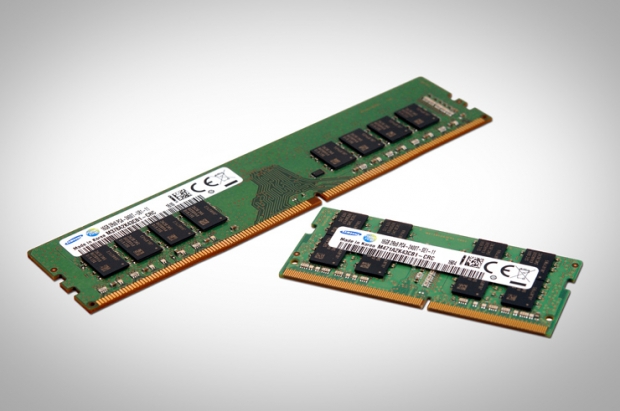Samsung claims that the new 8Gb DDR4 will offer the highest performance and energy efficiency for a DRAM chip.
Samsung Electronics' president of Memory Business, Gyoyoung Jin, said in a statement: "By developing innovative technologies in DRAM circuit design and process, we have broken through what has been a major barrier for DRAM scalability. Through a rapid ramp-up of the second-generation 10nm-class DRAM, we will expand our overall 10nm-class DRAM production more aggressively, in order to accommodate strong market demand and continue to strengthen our business competitiveness."
The fresh 10nm-class 8Gb DDR4 claims to be not only 30 percent more productive over the firm's first-generation 10nm-class 8Gb DDR4, but boasts 10 percent better performance levels and 15 percent better energy efficiency. This, Samsung claims, is thanks to the use of an advanced, proprietary circuit design technology.
"The new [chip] can operate at 3,600 megabits per second (Mbps) per pin, compared to 3,200 Mbps of the company's 1x-nm 8Gb DDR4", the company said.
"To enable these achievements, [we have] applied new technologies, without the use of an EUV process. The innovation here includes use of a high-sensitivity cell data sensing system and a progressive ‘air spacer' scheme."
This newly devised data sensing system can be found in the cells of the new DRAM chip enabling "a more accurate determination" of the data stored in each cell, which apparently leads to a considerable increase in the level of circuit integration and manufacturing productivity.
The new 10nm class DRAM uses an air spacer that has been placed around its bit lines to decrease parasitic capacitance.
Samsung said that using the air spacer facilitates not only a higher level of scaling, but also rapid cell operation, advances that the firm plans to use in future chip developments and to accelerate faster introductions of next-generation DRAM chips and systems, including DDR5, HBM3, LPDDR5 and GDDR6.
These would be used in enterprise servers, mobile devices, supercomputers, HPC systems and high speed graphics cards, the firm said.

